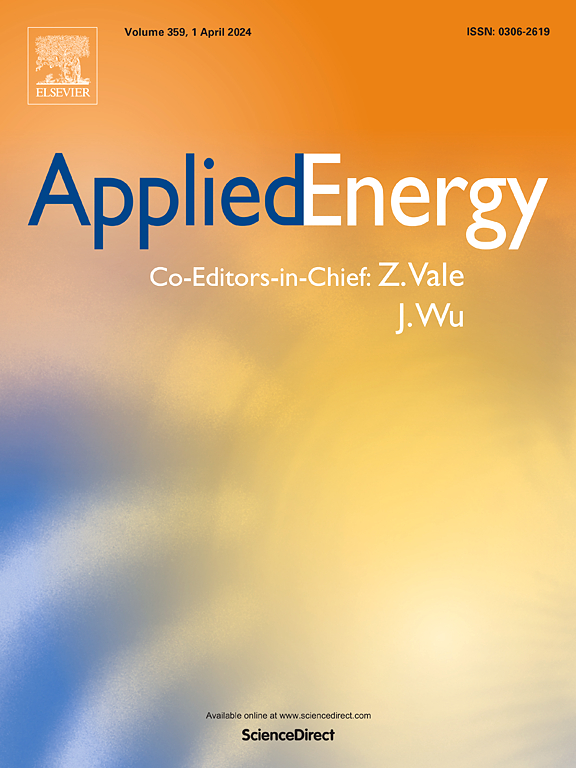评估未来脱碳电网的先进核裂变技术
IF 10.1
1区 工程技术
Q1 ENERGY & FUELS
引用次数: 0
摘要
先进的核裂变包括各种创新的核反应堆设计,可以为美国电力部门的脱碳做出贡献。然而,与其他技术相比,这些反应堆的成本竞争力如何,或者它们设计的哪些方面对脱碳电网最有价值,人们知之甚少。我们采用电力系统优化模型和2050年前后美国东部电网脱碳的案例研究,生成先进反应堆未来经济价值的初始指标,以及未来价值对各种设计参数、竞争技术的可用性和潜在政策环境的敏感性。这些结果可以为长期成本目标提供信息,并指导近期的创新重点、投资和反应堆设计决策。我们发现,为了获得初始市场份额,先进反应堆的成本应为5.7 - 7.3美元/W(假设资产寿命为30 年,实际加权平均资本成本为3.5 % - 6.5 %),而那些在设计中包括蓄热的反应堆的成本可能高达6.0美元/W - 7.7美元/W(不包括蓄热成本)。由于先进裂变反应堆的边际价值随着市场渗透率的增加而下降,在累积容量为100吉瓦时,盈亏平衡成本下降了~ 32 %,在300吉瓦时,盈亏平衡成本下降了~ 51 %。此外,为核能提供投资税收抵免的政策为先进核裂变创造了最有利的环境。这些发现可以为能源技术领域的利益相关者、创新者和投资者的近期资源分配决策提供信息。本文章由计算机程序翻译,如有差异,请以英文原文为准。
Evaluating advanced nuclear fission technologies for future decarbonized power grids
Advanced nuclear fission, which encompasses various innovative nuclear reactor designs, could contribute to the decarbonization of the United States electricity sector. However, little is known about how cost-competitive these reactors would be compared to other technologies, or about which aspects of their designs offer the most value to a decarbonized power grid. We employ an electricity system optimization model and a case study of a decarbonized U.S. Eastern Interconnection circa 2050 to generate initial indicators of future economic value for advanced reactors and the sensitivity of future value to various design parameters, the availability of competing technologies, and the underlying policy environment. These results can inform long-term cost targets and guide near-term innovation priorities, investments, and reactor design decisions. We find that advanced reactors should cost $5.7–$7.3/W to gain an initial market share (assuming 30 year asset life and 3.5 %–6.5 % real weighted average cost of capital), while those that include thermal storage in their designs can cost up to $6.0/W–$7.7/W (not including cost of storage). Since the marginal value of advanced fission reactors declines as market penetration increases, break-even costs fall 32 % at 100 GW of cumulative capacity and 51 % at 300 GW. Additionally, policies that provide investment tax credits for nuclear energy create the most favorable environment for advanced nuclear fission. These findings can inform near-term resource allocation decisions by stakeholders, innovators and investors working in the energy technology sector.
求助全文
通过发布文献求助,成功后即可免费获取论文全文。
去求助
来源期刊

Applied Energy
工程技术-工程:化工
CiteScore
21.20
自引率
10.70%
发文量
1830
审稿时长
41 days
期刊介绍:
Applied Energy serves as a platform for sharing innovations, research, development, and demonstrations in energy conversion, conservation, and sustainable energy systems. The journal covers topics such as optimal energy resource use, environmental pollutant mitigation, and energy process analysis. It welcomes original papers, review articles, technical notes, and letters to the editor. Authors are encouraged to submit manuscripts that bridge the gap between research, development, and implementation. The journal addresses a wide spectrum of topics, including fossil and renewable energy technologies, energy economics, and environmental impacts. Applied Energy also explores modeling and forecasting, conservation strategies, and the social and economic implications of energy policies, including climate change mitigation. It is complemented by the open-access journal Advances in Applied Energy.
 求助内容:
求助内容: 应助结果提醒方式:
应助结果提醒方式:


